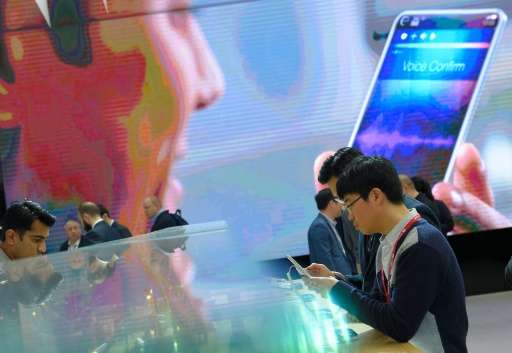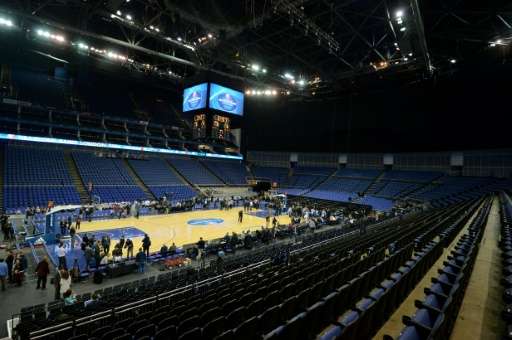Stadiums ramp up wireless technology to seduce fans

Forget the selfie. Fans cheering on their idols at concerts or sporting events are using their phones for more than just snaps, ordering food and even checking the length of toilet lines as venues use technology to draw in spectators.
US computer networking titan Cisco says it has provided wireless connectivity that allows such features to work in over 300 venues in 35 countries, including the 02 arena in London, Staples Center in Los Angeles and ANZ Stadium in Sydney.
"It can truly make the experience in the stadium even better than what it is going to be on television," said Doug Webster, a vice-president for Cisco, at the world's biggest mobile trade fair, the Mobile World Congress, that runs until Thursday in Barcelona.
"You are going to get all the energy of the people there but you also can get all the rich features that you have learned to appreciate watching at home on television like easy access to statistics and replays."
Silicon Valley stadium
The world's most technologically advanced stadium can be found, not surprisingly, in Silicon Valley in California, the heart of the tech universe.
Opened in July 2014, Levi's Stadium, the home of the San Francisco 49ers which hosted the Super Bowl earlier this month, has over 600 kilometres (400 miles) of fibre optic cable that feeds 680 Wi-Fi access points—one for every 100 seats.

The strong connectivity ensures fans can easily upload photos to social media sites and use an in-house app to find their seats, order beer and hot dogs, and guide them to the closest bathroom with the shortest lines.
They can also watch up to four replays at a time during the game and receive stats on players through the app.
"There are lots of interesting things you can do to keep people coming back, not only to the app but also to the stadium, and drive ticket sales," said Laurence Sotsky, the founder and CEO of Hopscotch, a US firm that operates mobile services platforms for sports teams and venues.
The company is creating an app for all 12 teams of the Philippine Basketball Association which will provide exclusive videos from games not available on television, said the country's former national men's basketball team coach Chot Reyes, who is working with Hopscotch on the project.
"You are going to see the coach cursing out his players, you are going to see player fights, you are going to see the wife crying after a bitter finals loss. We are going to try to bring all of these little things in there," he said.
New revenue streams
Going high tech also opens up new revenue streams for stadiums.
Fans at Levi's Stadium for example are given the option of buying premium seat upgrades on their mobile devices when they arrive.
At NBA basketball games in the United States fans receive notifications of special offers on food, drinks and merchandise on an in-house app.
A Cisco survey found that 38 percent of fans at venues with good Internet connectivity ordered food and drinks through their mobile devices to be delivered to their seats or picked up while at a game.
But it was not always so.
Technology for fans at sports venues in the past was limited to a transistor radio with an ear piece to hear live commentary.
When smartphones first took off a decade ago, sports venues initially did not see the need to provide connectivity, believing it would be a distraction from the game.
But spectators proved otherwise, posting photos and streaming videos which clogged up wireless networks—forcing venues to adapt.
"There is no question now that the days when people complained that their phone did not work and they couldn't make a phone call are over," said Kate McKenzie, chief operating officer at Telstra, Australia's biggest phone company which provides connectivity in 28 venues in the country.
"It is just expected."
© 2016 AFP




















